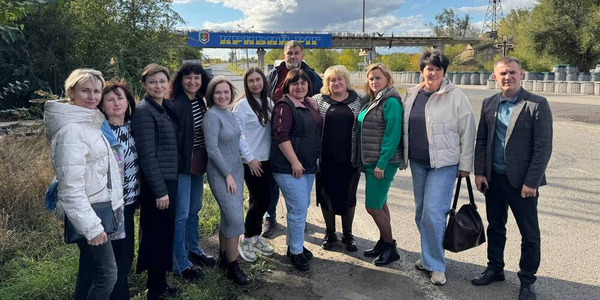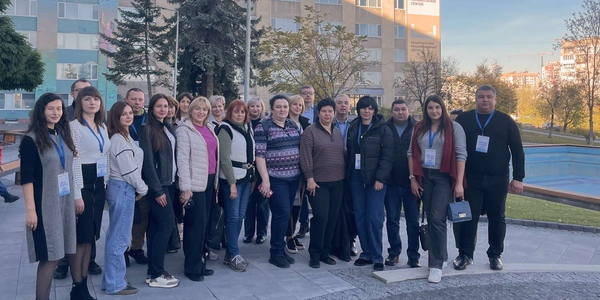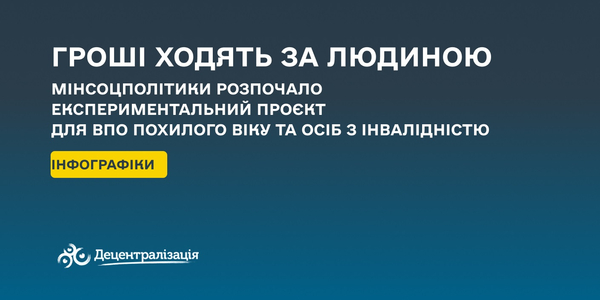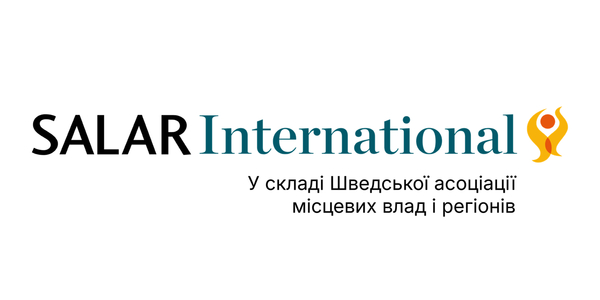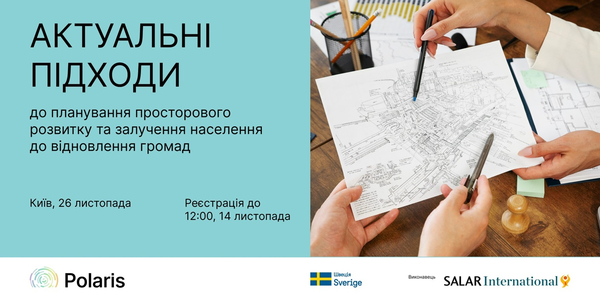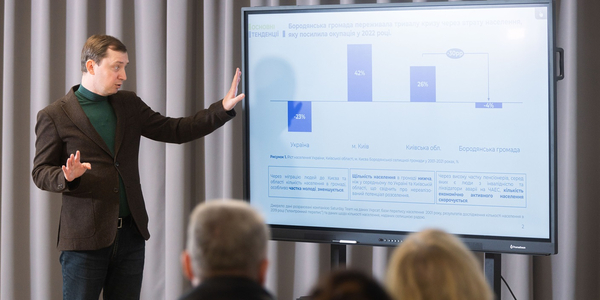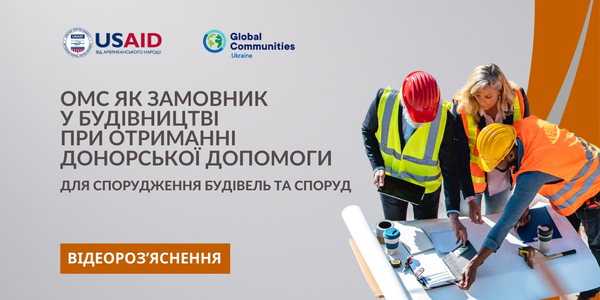Currently, Ukraine has three million people with disabilities, a staggering 10 percent of its population, and this number is increasing daily due to the war. In August 2023, The Wall Street Journal reported that between 20,000 and 50,000 people in Ukraine had lost limbs, reaching levels comparable to World War I.
There are 3.5 million internally displaced persons (IDPs) in Ukraine, according to estimates by the International Organization for Migration. Additionally, there are over one million veterans, as reported by the Deputy Minister for Veterans Affairs.
This situation has presented communities with a severe challenge — radically changing their approaches to social infrastructure, services, and community interaction to cater to inclusive groups. Over the past few years, the USAID HOVERLA Activity has made significant efforts to enhance the inclusivity, quality, and accessibility of municipal services for people with disabilities, IDPs, veterans, and orphans. Working in this direction, HOVERLA considers both international standards and best local practices.
Together with civil society organizations like the Prostir Foundation, Lviv Association for Tourism Development, Human Rights Union for the Disabled, Ukrainian Network for Children’s Rights, Women and Children with Disabilities of Northern Donbas, Volyn Institute of Law, European Dialogue, and the National Assembly of People with Disabilities of Ukraine, HOVERLA achieved significant results and changes.

Participants of the CSO Organizational Development Program by USAID HOVERLA Activity
Audits and Recommendations
In over 80 communities, comprehensive audits have been conducted to assess physical and digital accessibility. These audits covered municipal social services, administrative service centers, cultural and historical sites, major tourist attractions, and healthcare facilities. They also evaluated the participation of people with disabilities in community decision-making. Based on the findings, experts prepared tailored recommendations to enhance accessibility, helped create community social profiles—detailed documents with statistical data, lists of social institutions (like inclusive schools, kindergartens, and hospices), and information on local social programs. This data is used to drive improvements. Additionally, 12 roadmaps are being developed to ensure accessible and quality rehabilitation services.
Education and Events
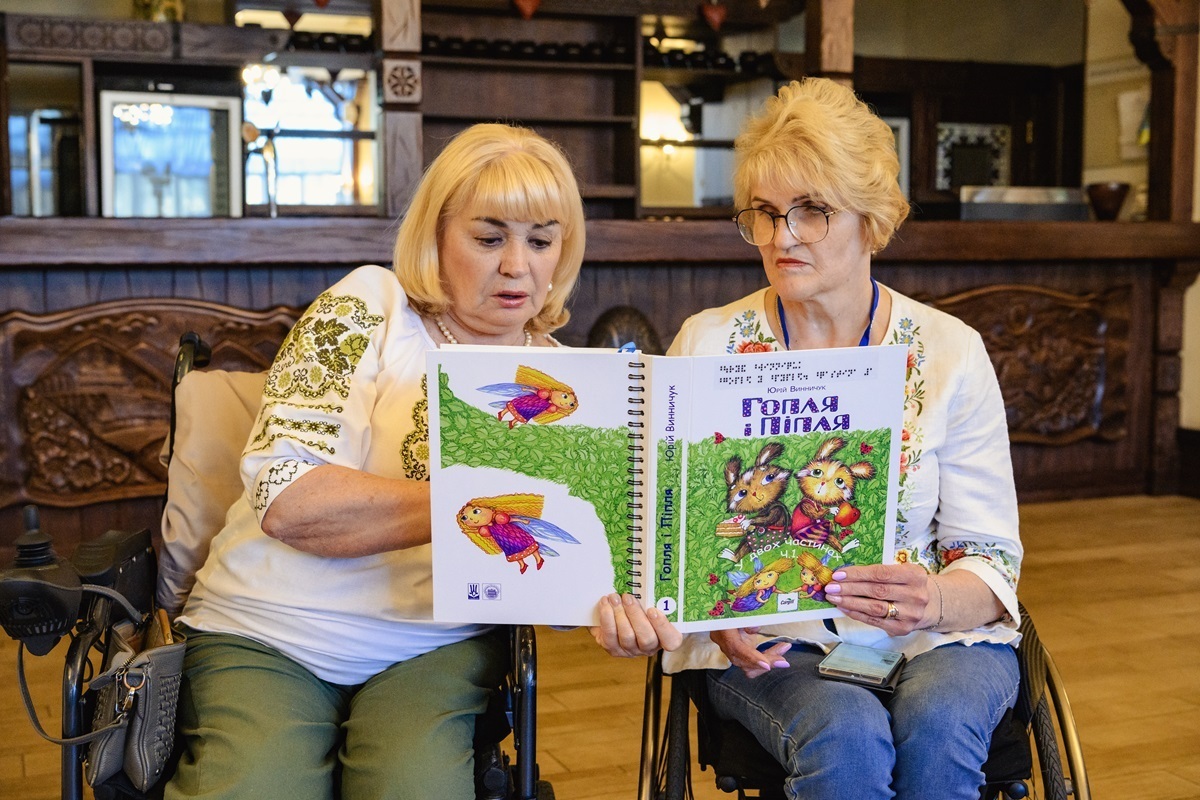
More than 1,300 government officials, local government representatives, CSOs, tourism and museum sector representatives, higher education teachers, students, and social volunteers have raised awareness on accessibility issues in municipal services, tourism, work with IDPs, orphans, and children deprived of parental care, among others. Read more about one such training here. As a result of one of thetraining, 20 inclusive advisors were trained to promote the idea of building an inclusive society, assist authorities in developing local development programs and improvement projects, and consult people with limited mobility on social services.
In Volyn Region, 10 communities hosted more than 60 integration events for IDPs, contributing to their socialization and adaptation. In Horokhiv, for instance, the mayor created a musical band when he discovered that one of the IDPs was a musician. This band not only added vibrancy to local events but also inspired young people to pick up musical instruments.
Equipment
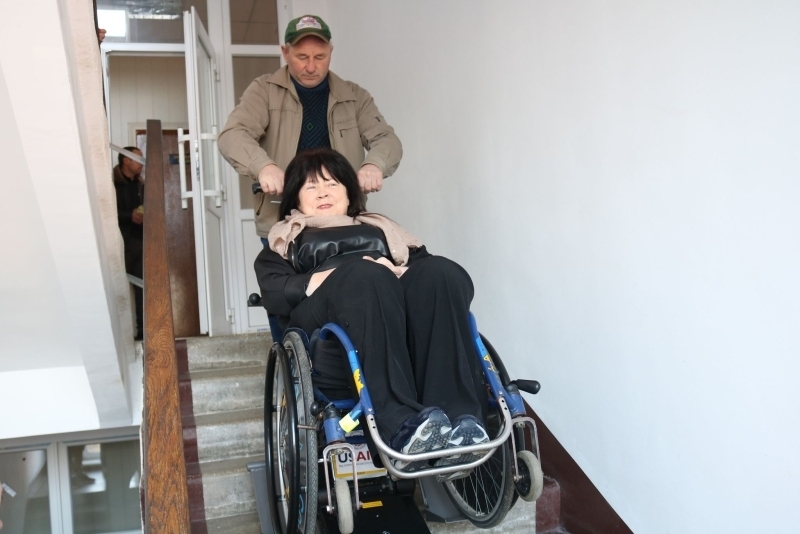
HOVERLA equipped seven communities with stair climbers, and eight others received rehabilitation kits and educational sets for children. Additionally, six other municipalities received rehabilitation equipment for medical facilities and furniture for rehabilitation offices. This initiative inspires communities to seek new ways to foster inclusion. You can read more about these efforts in the story about Bila Krynytsia.
The Donbas-Prykarpattya Rehabilitation Center, now twice relocated and serving over 200 people with disabilities from surrounding communities in the Ivano-Frankivsk, Lviv, and Zakarpattia regions, received vital support from the USAID HOVERLA Activity. The center was provided with an upper limb recovery trainer, medical stairs, and parallel bars for those learning to walk again. The center also received a medical bed with a reclining function for easy patient transfers, a stationary bicycle for muscle warm-ups, and a rehabilitation table for finger motor skill exercises. Watch the video to learn more about the center’s story and its support.
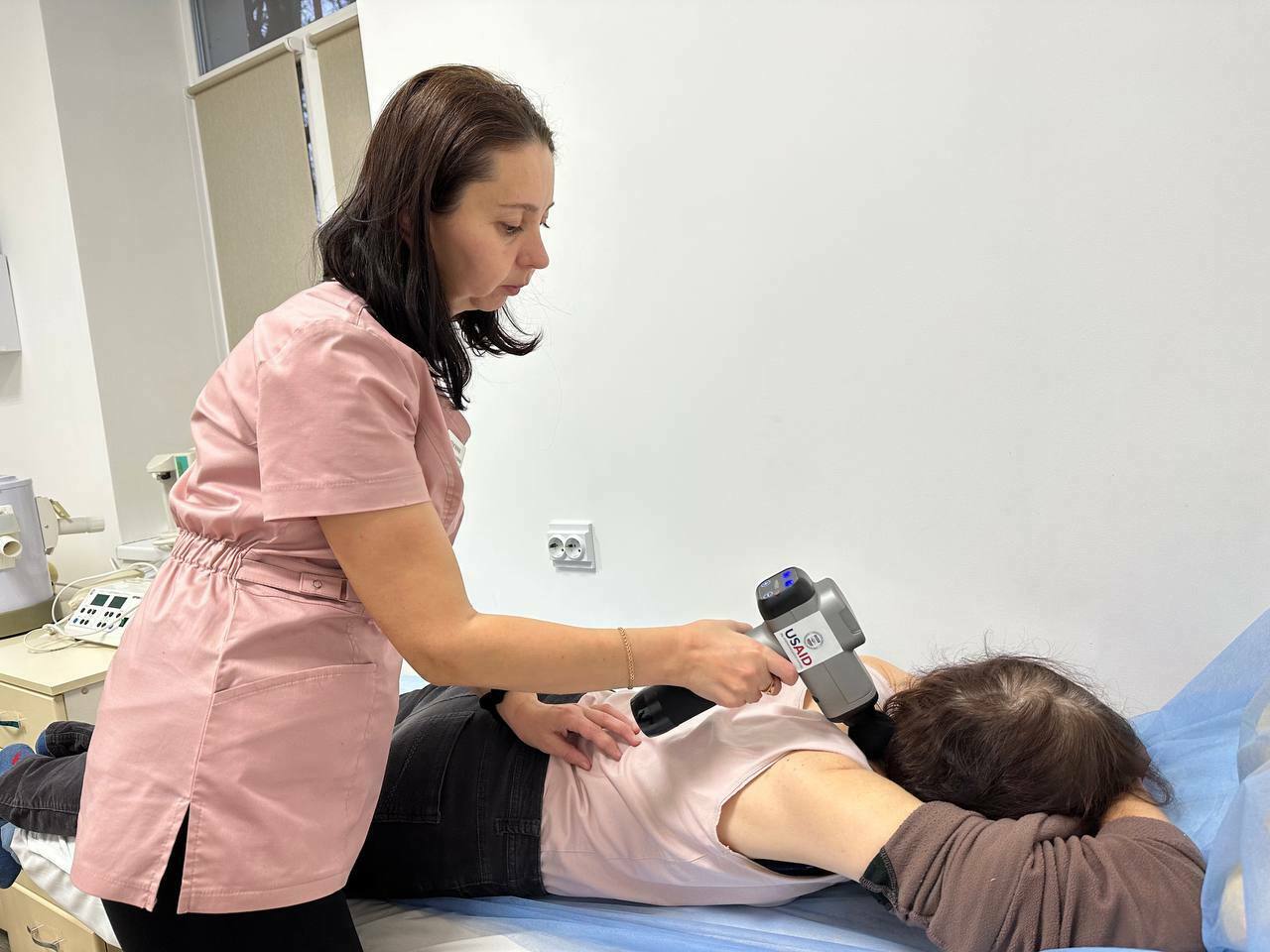
The Sports for All Center for Physical Health of the Population in Volodymyr, Volyn Region, recently opened an upgraded sports hall equipped with new modern facilities provided by the USAID HOVERLA Activity. This gym, frequented by about a thousand people per year, offers a range of equipment designed to target all muscle groups. These machines allow users to isolate specific movements, such as flexion or extension of an injured limb, aiding in the recovery of mobility. The gym also fosters social integration, with many young people actively engaging with veterans. There are around 40 veterans who are regulars at the gym. One of them is Valeriy Kostiuk who is recovering from severe injuries sustained in the war (read his story
Soon, 12 additional communities will receive six sets of rehabilitation equipment for medical facilities, six sets for rehabilitation offices, and 12 sets of office equipment for inclusion working groups, with nearby communities sharing equipment.
Sensorial Guides and Assistive technologies
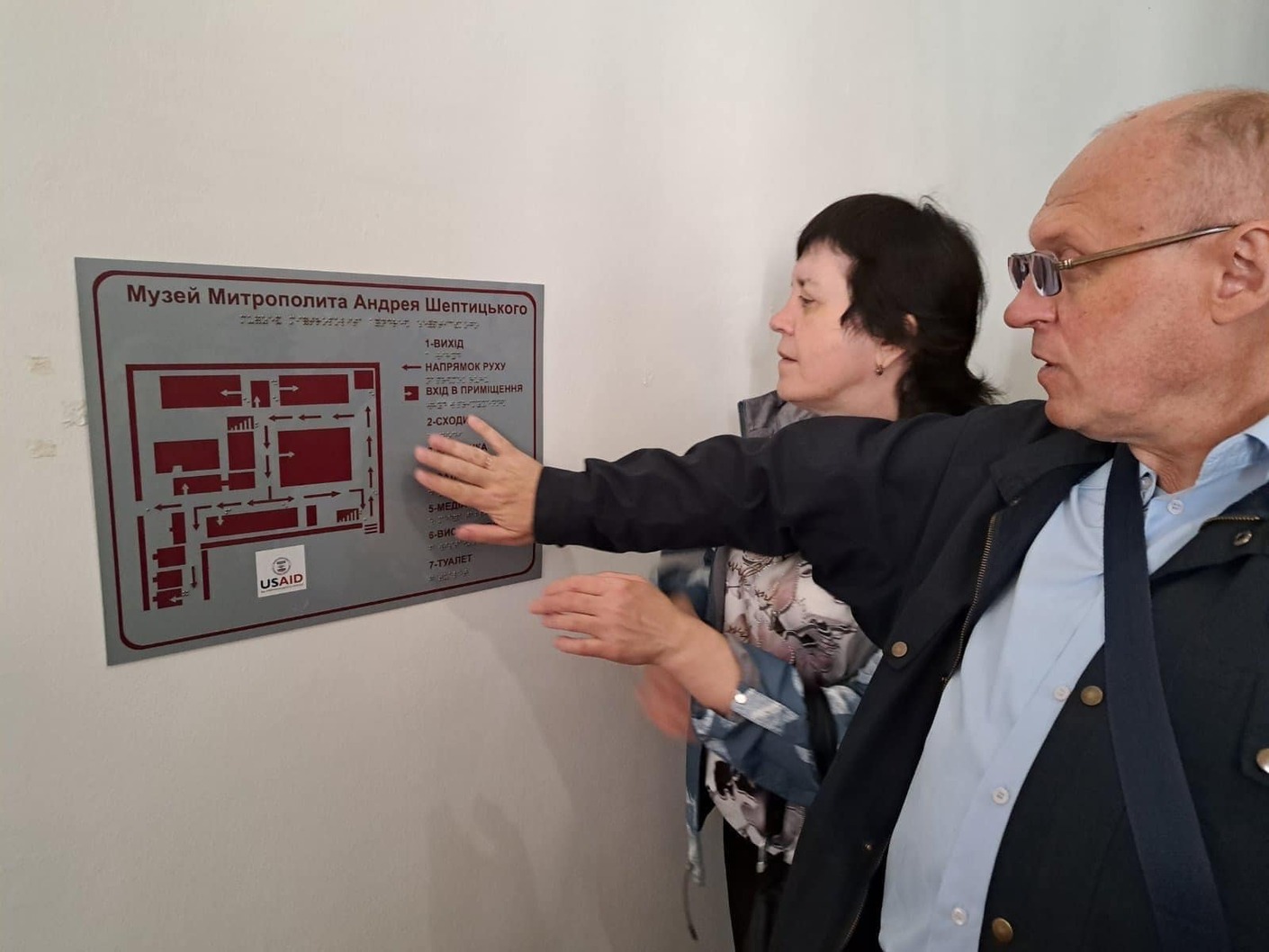
To help tourists with limited mobility travel to tourist locations, HOVERLA developed a special interactive map of the Rivne, Volyn, Zakarpattia, and Lviv regions with accessibility information. This map was used by around 1200 people. A guide to western Ukraine has been created, featuring Braille and large print, with the addition of an audio version and a tactile relief drawing.
The Metropolitan Andrey Sheptytsky Museum in Lviv received audiovisual equipment for people with visual impairments. The museum developed a tactile mnemonic map, direction indicators, combined media plaques using Braille with voice descriptions of exhibits, and audio guides. Approximately 20,000 people have already participated in the museum's barrier-free tours, including about 500 people with limited mobility. Read about how these tours take place in the article.
Inclusive practices are consistently implemented in collaboration with partners, becoming a standard approach. For instance, in partnership with its grantee, Ekotava, HOVERLA published a Braille communication manual on waste management. The manual includes tips on conducting surveys, creating effective messages, highlighting success stories, and more to help communities efficiently implement information campaigns, raising awareness of the importance of proper waste management and engaging residents in active participation in environmental protection.
HOVERLA and its partner organizations are actively working to integrate inclusive approaches within the local and national regulatory framework, such as advocating for changes to state building standards. Moreover, comprehensive communication campaigns are woven into most projects to raise awareness among Ukrainians about accessibility issues.
These efforts are a key component of USAID HOVERLA Activity’s support for the Ministry of Communities, Territories, and Infrastructure Development, aimed at creating equal opportunities for all citizens. By fostering inclusivity, these initiatives contribute to Ukraine's economic growth, social cohesion, innovation, and the advancement of democratic values and human rights.

